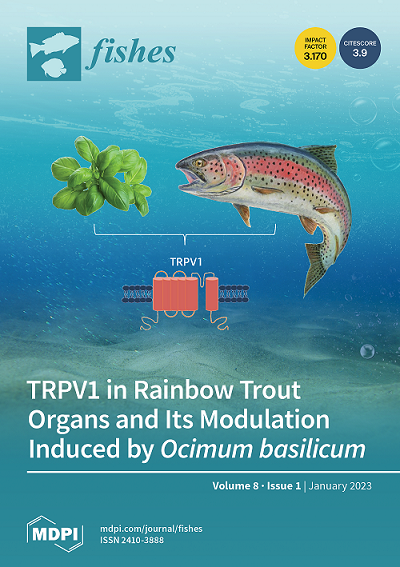Development and Seasonal Variations of the Larvae of Three Mesopelagic Fishes near Coral Reefs in the Red Sea
IF 2.1
3区 农林科学
Q2 FISHERIES
引用次数: 0
Abstract
This work aims to describe the larval stages and the seasonal variation in the abundance of three mesopelagic species whose larvae are surprisingly abundant near coral reef areas in the Red Sea. The larvae were collected monthly using a plankton net (500 µ) from three coastal coral reef areas surrounding Sharm El-Sheikh on the Egyptian Red Sea coast between January and December 2015. The identification of larvae was based on the morphological and meristic characteristics according to the available literature. The larvae of this species were divided into preflexion, flexion, and postflexion stages and they were also categorized according to their size into relevant size classes. Mesopelagic fishes were represented in the collection by four species belonging to four families: Vinciguerria mabahiss (Family: Phosichthyidae), Benthosema pterotum (Family: Myctophidae), Astronesthes martensii (Family: Stomiidae; subfamily: Astronesthinae), and Trichiurus sp. (Family: Trichiuridae). In general, a total of 3678 larvae were collected, of which 1191, constituting about 32% of the total fish larvae, belonged to mesopelagic species. The most abundant species was V. mabahiss, with 677 larvae that constituted 18% and 57% of the total larvae and mesopelagic fish larvae, respectively. The second most abundant species was B. pterotum, which was represented by 485 larvae (13% of the total larvae and 40% of the mesopelagic fish larvae). A. martensii was represented by the lowest number of larvae (29 larvae, 2%). Most larvae of the three species were small and in the preflexion stage, whereas larger larvae are absent. They are highly abundant in the cooler months of the year between November and April. The high number of preflexion larvae may indicate that the three mesopelagic species spawn in the colder times of the year.红海珊瑚礁附近三种中上层鱼类幼鱼的发育和季节变化
这项工作的目的是描述幼虫阶段和丰度的三个中远洋物种的季节变化,其幼虫在红海珊瑚礁区附近惊人地丰富。2015年1月至12月,在埃及红海沿岸沙姆沙伊赫周围的三个沿海珊瑚礁区使用浮游生物网(500µ)每月收集幼虫。根据现有文献,根据形态和分生特征对幼虫进行鉴定。幼虫分为屈前期、屈前期和屈后期,并按体型划分为相应的体型类。中远洋鱼类分属4科4种,分别为:青花鲈科(光鳉科)、斑底鲈科(紫鳉科)、马氏鲈科(气孔科)和马氏鲈科(气孔科);和毛滴虫(毛滴虫科)。共捕获幼鱼3678条,其中中远洋鱼种1191条,占总鱼种的32%。其中最丰富的种类是马巴鱼,有677条幼虫,分别占总幼虫的18%和57%;第二丰富的是翼鱼,有485条幼虫(占总幼虫的13%,占中远洋鱼类幼虫的40%)。马氏依蚊的幼虫数量最少,为29只,占总数的2%。3种幼虫大都体型较小,处于前屈期,未见较大幼虫。它们在一年中较凉爽的月份,即11月至4月间非常丰富。预屈曲幼虫的高数量可能表明这三种中上层物种在一年中较冷的时候产卵。
本文章由计算机程序翻译,如有差异,请以英文原文为准。
求助全文
约1分钟内获得全文
求助全文

 求助内容:
求助内容: 应助结果提醒方式:
应助结果提醒方式:


